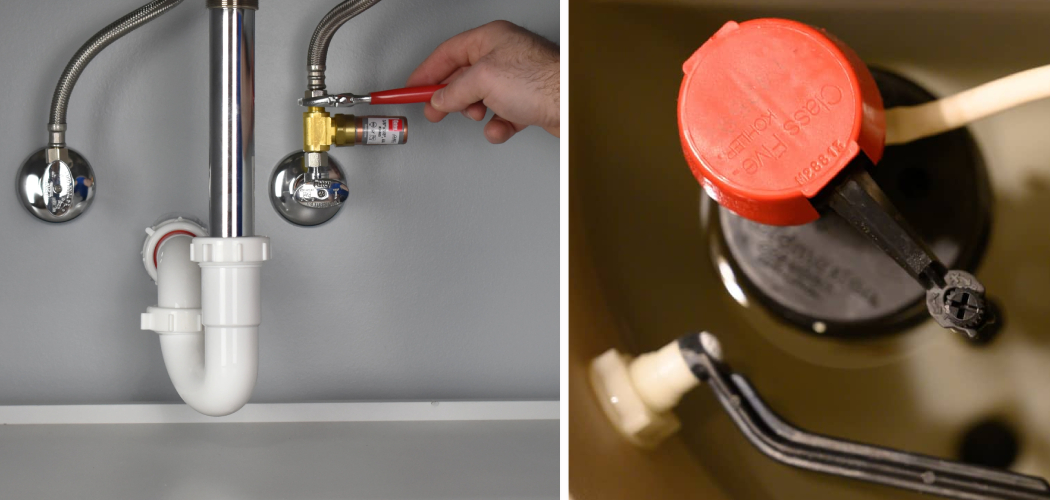Water hammer is a common problem that many homeowners experience when their toilet fill valve closes. This phenomenon occurs when there is a sudden increase in water pressure within the pipes, causing them to vibrate and create a loud banging noise. Not only can this be annoying and disruptive, but it can also cause damage to your plumbing system over time.
Fortunately, you can take steps on how to stop water hammer when toilet fill valve closes. This guide will discuss the causes of water hammers and provide solutions to prevent them. If you’re tired of hearing that loud banging noise every time you flush your toilet, read on to learn how to stop water hammer.

Understanding Water Hammer in Toilets
Water hammer results from water moving too quickly through your plumbing system and coming to an abrupt stop. It’s similar to the sound produced when a moving train abruptly stops on its tracks. In the case of toilets, it occurs when the fill valve closes after you flush.
The sudden stoppage of water flow creates a shock wave that travels through your pipes, vibrating them and making the familiar banging noise. This shock wave can also damage your pipes by loosening joints, leading to leaks and other plumbing issues.
11 Best Ways on How to Stop Water Hammer When Toilet Fill Valve Closes
1. Install a Water Hammer Arrestor:
One of the most effective solutions to stop water hammering in toilets is by installing a water hammer arrestor. This device acts as a shock absorber and prevents the shock wave from traveling through your pipes, eliminating the banging noise. This is a permanent solution, but it may require the expertise of a plumber to install. Leaving this task to a professional is best if you’re uncomfortable with DIY plumbing.
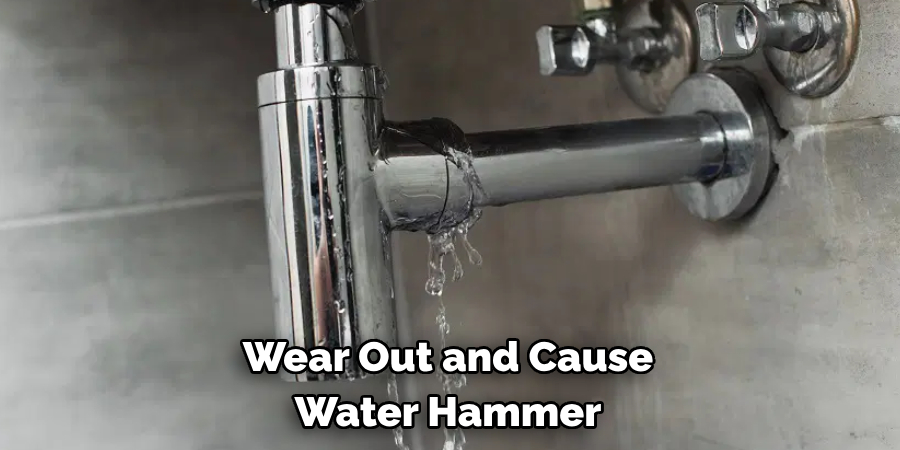
2. Adjust the Water Pressure:
High water pressure can contribute to water hammer in toilets. If your home’s water pressure is above 80 psi (pounds per square inch), it may be causing the problem. You can adjust the water pressure using a pressure regulator or installing an expansion tank. Maintaining a safe water pressure is important to prevent damage to your plumbing system. If you’re unsure of how to adjust the water pressure, consult a plumber for assistance.
3. Check and Replace Old Fill Valve:
Over time, toilet fill valves can wear out and cause water hammer. If your fill valve is old and worn, it may not close properly, leading to a sudden stoppage of water flow and creating a shock wave. Inspect your fill valve; if it’s damaged or worn, replace it with a new one to eliminate the problem. Make sure to choose a high-quality fill valve that can withstand wear and tear.
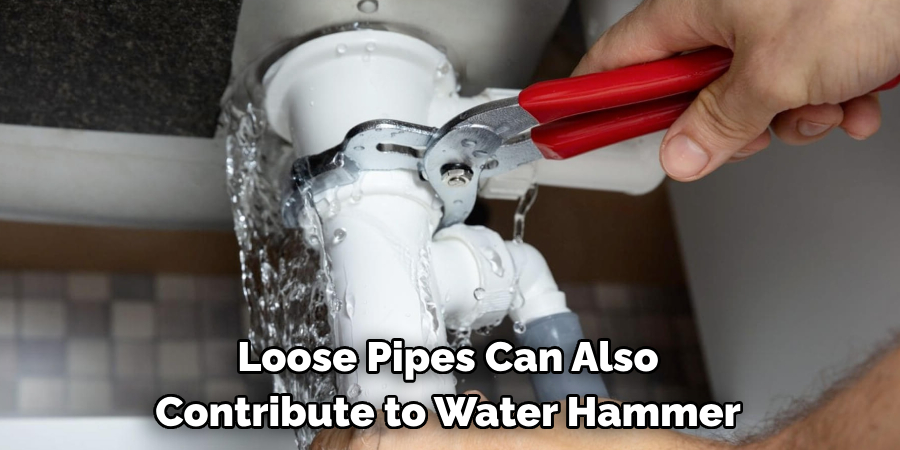
4. Install an Air Chamber:
An air chamber is a vertical pipe installed in your plumbing system near the shut-off valve. A cushion of air absorbs the shock wave when the water flow suddenly stops, preventing a banging noise. You can easily install an air chamber independently, but consult a plumber if you’re unsure how to do it. This is a cost-effective solution to stop water hammering.
5. Check for Loose Pipes:
Loose pipes can also contribute to water hammer in toilets. When your plumbing system is not properly secured, the sudden stoppage of water flow can cause the pipes to vibrate against walls or other surfaces, creating a banging noise. Inspect your pipes and securely fasten them with pipe straps or hangers.
6. Install Water Pressure Reducing Valves:
If your home has a high water pressure issue, installing water pressure-reducing valves can help regulate it and prevent water hammer. These valves are installed on the main water line, reducing the incoming water pressure to a safe level. Again, consult a plumber if you’re unsure how to install these valves. While this may be a more expensive solution, it can effectively prevent water hammer and protect your plumbing system.
7. Replace Old Plumbing:
Old and corroded pipes can also contribute to water hammering in toilets. If you have an older home with outdated plumbing, consider replacing it with newer, high-quality materials. This can prevent water hammers and improve your plumbing system’s overall functionality and efficiency. If you’re unsure if your plumbing needs replacing, consult a professional plumber for an assessment.
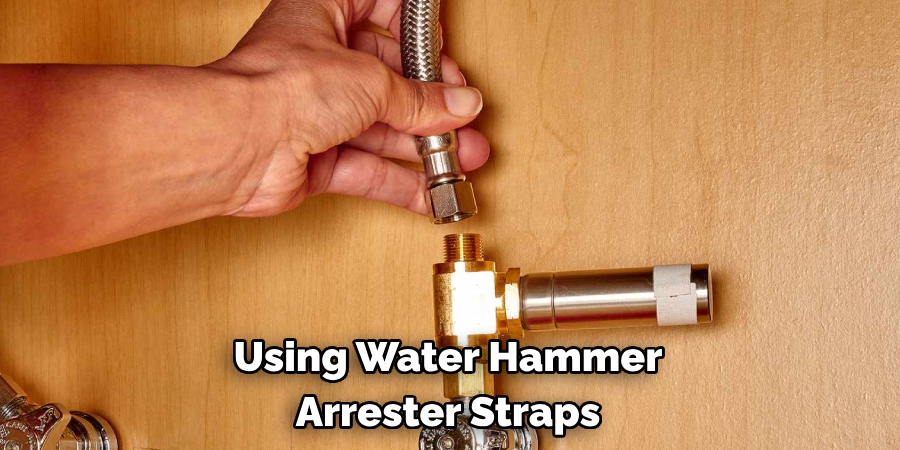
8. Install Water Pressure Regulating Valve:
Like a water pressure reducing valve, a water pressure regulating valve can also help control the incoming water pressure and prevent water hammer. However, these valves are installed after the main shut-off valve and regulate the water pressure throughout your home. Again, it’s best to consult a plumber for installation.
9. Use Water Hammer Arrester Straps:
If you cannot install a water hammer arrestor or air chamber, using water hammer arrester straps is another option. These straps are designed to absorb the shock wave and prevent pipes from vibrating against walls or other surfaces. They can be easily installed on your own and are a budget-friendly solution. Using several straps throughout your plumbing system can effectively eliminate water hammering.
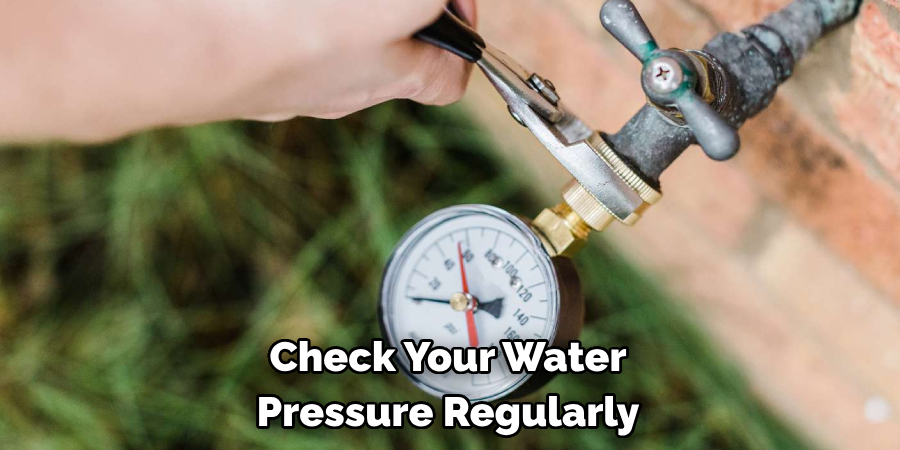
10. Insulate Your Pipes:
Sometimes, water hammer can be caused by colder temperatures affecting the pipes. This is common during winter months when the temperature drops significantly. Insulating your pipes with foam or other materials can help regulate the temperature and prevent water hammering. This simple, affordable solution can also help prevent frozen pipes.
11. Consult a Professional Plumber:
If you’ve tried all the DIY solutions and still experience water hammer in your toilet, it’s best to consult a professional plumber for assistance. They have the expertise and equipment to accurately diagnose the issue and provide an effective solution. Don’t hesitate to seek professional help to prevent further damage to your plumbing system.
Following these tips and solutions can effectively stop water hammering when the toilet fill valve closes, preventing damage to your plumbing system and keeping your home peaceful and quiet. Remember to regularly maintain your plumbing system to prevent any future issues. Happy plumbing!
Additional Tips and Tricks to Stop Water Hammer When Toilet Fill Valve Closes
1. If you have an older toilet, consider replacing it with a newer model that is specifically designed to reduce water hammer. These models have built-in shock absorbers and other features to help reduce the noise and pressure associated with water hammer.
2. Check your water pressure regularly and adjust it if necessary. High water pressure can contribute to water hammer, so keeping it at a moderate level can help prevent it.
3. Install water hammer arrestors on your plumbing lines. These devices act as shock absorbers and can significantly reduce the impact of water hammers on your pipes.
4. Consider installing a pressure regulator on your main water line to regulate the overall water pressure in your home.
5. If you are experiencing frequent and severe water hammer, consult a plumber for professional advice. They can identify and fix any underlying issues with your plumbing system.
6. Regularly inspect and maintain your plumbing fixtures, such as toilet fill valves, to ensure they function properly. A malfunctioning valve can contribute to a water hammer.
7. Avoid slamming or forcefully closing valves or faucets, as this can create strong pressure waves in the pipes. Instead, turn them off gently to prevent water hammer.
8. If you hear a water hammer when using appliances such as washing machines or dishwashers, ensure they are properly installed and balanced. An unbalanced appliance can contribute to a water hammer.
9. Consider insulating your exposed plumbing pipes with foam insulation to dampen the noise and reduce the impact of the water hammer. This is especially beneficial for pipes located near living spaces.
10. If you have a water hammer arrestor installed, make sure to check it regularly and replace it if necessary. Over time, these devices can become worn out and lose their effectiveness.
11. If the noise from the water hammer is particularly bothersome, consider installing soundproofing materials on the walls or floors near the affected pipes. This can help reduce the noise and make your home more comfortable.
Following these additional tips and tricks can help prevent or reduce the effects of water hammer in your plumbing system. By properly maintaining your fixtures and taking necessary precautions, you can enjoy a quieter and more efficient home. Remember to regularly check for any unusual noises or issues with your plumbing system and consult a professional if needed.
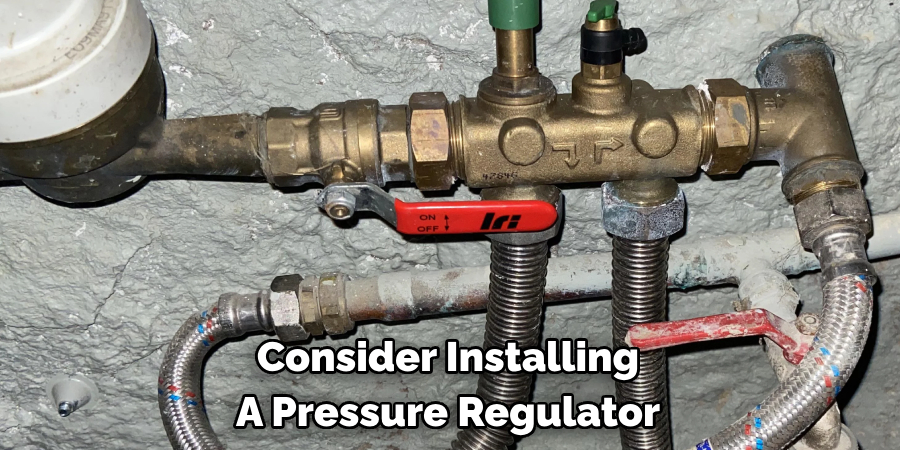
Things You Should Consider to Stop Water Hammer When Toilet Fill Valve Closes
1. First, you should consider the pressure of your home’s water supply. A water hammer occurs when there is a sudden change in water flow or pressure, causing the pipes to vibrate and bang against each other. To avoid this, ensure your home’s water pressure is within the recommended range (usually between 40 and 80 psi).
2. Check for any loose pipes or fittings. Over time, pipes can loosen and cause water hammer. It is important to regularly check and tighten any loose pipes or fittings in your plumbing system.
3. Install a water hammer arrestor. A water hammer arrestor is a small device that absorbs the shock of sudden changes in water flow or pressure. They are easy to install and can be attached to the shut-off valve or at the point where the water enters your home.
4. Consider installing air chambers. Air chambers are vertical pipes that are attached to plumbing lines near fixtures and appliances, such as a toilet or dishwasher. They act as shock absorbers for sudden changes in water pressure and can help reduce water hammer.
5. Inspect your toilet’s fill valve. If your toilet fill valve is malfunctioning, it can cause a water hammer when it closes after filling the tank. Make sure the fill valve is in good condition and functioning properly.
6. Try adjusting the shut-off valve. The shut-off valve controls water flow into your home and can be adjusted to reduce or increase the water pressure. If you notice a water hammer occurring at a specific fixture, try adjusting the shut-off valve to see if it helps.
7. Consider hiring a professional plumber. If you have tried these solutions and are still experiencing water hammer, it may be best to consult a professional plumber. They can further assess your plumbing system and provide recommendations specific to your home.
8. Regularly maintain your plumbing system. To prevent future occurrences of water hammer, it is important to regularly maintain your plumbing system. This includes checking for leaks or loose pipes and ensuring proper water pressure and functioning fixtures.
9. Educate other household members. Educating everyone in your household about the potential causes of water hammer and how to prevent it is important. This can help avoid future instances and ensure everyone knows what to do if it does occur.
Following these considerations can help you prevent and stop water hammering when your toilet fill valve closes. Maintaining your plumbing system and making any necessary adjustments can ensure the smooth operation of your home’s water supply. Remember to regularly check for any issues and consult a professional if needed to avoid potential damage to your pipes and fixtures. So, remember these tips and say goodbye to the annoying water hammer!
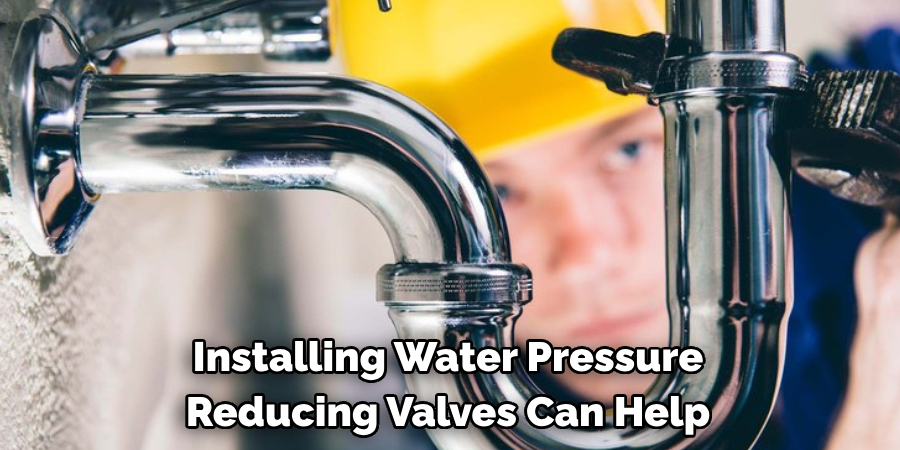
Troubleshooting Persistent Water Hammer
1. Check for Loose Pipes:
The first step in troubleshooting persistent water hammers is to check for loose pipes in your plumbing system. Over time, pipes can become loose due to wear and tear or inadequate installation. To check for loose pipes, turn off the main water supply and inspect all visible pipes for any signs of movement or play. Secure any loose pipes using pipe hangers or clips if you notice any loose pipes.
2. Inspect Valves and Faucets:
Faulty valves and faucets are another common cause of water hammers. To troubleshoot this issue, turn off the main water supply and inspect all valves and faucets in your home. Look for any signs of leaks, corrosion, or wear and tear. If you notice any issues, replace the faulty valves or faucets to prevent water hammers from occurring.
3. Install Water Hammer Arrestors:
If you have checked for loose pipes and inspected your valves and faucets but are still experiencing persistent water hammers, it may be time to install water hammer arrestors. These devices are installed in plumbing lines near appliances such as dishwashers, washing machines, and toilets to absorb the shock of the water hammer. They can also be installed on individual faucets or showerheads. Consult a professional plumber for the proper installation of water hammer arrestors.
4. Check Water Pressure:
High water pressure can also contribute to persistent water hammers. To check your water pressure, purchase a pressure gauge from a hardware store and attach it to an outdoor faucet. Turn on the faucet and check the pressure reading. If it is above 80 psi, you may need to install a pressure-reducing valve or adjust your home’s water pressure regulator.
5. Consider Drainage Issues:
Improper drainage can also lead to water hammer problems. Check all drain lines in your plumbing system for any clogs or obstructions. If necessary, use a plunger or plumbing snake to clear any blockages. Consider installing additional drainage systems, such as air chambers or vent pipes, to help alleviate water hammer issues.
6. Consult a Professional:
If you have tried all of these troubleshooting steps and are still experiencing persistent water hammers, it may be time to consult a professional plumber. They will have the expertise and tools to properly diagnose and fix any underlying issues causing water hammer in your plumbing system. Make sure to communicate all the steps you have taken so far and any other relevant information to help them identify the problem quickly.
Following these troubleshooting steps can help you identify and fix any persistent water hammer issues in your home. Remember to always prioritize safety when working with plumbing systems, and if in doubt, consult a professional for assistance. With proper maintenance and regular check-ups, you can prevent water hammers and ensure smooth operation of your plumbing system. So, it is important to know the potential causes—and troubleshooting techniques to keep your plumbing system in top condition.
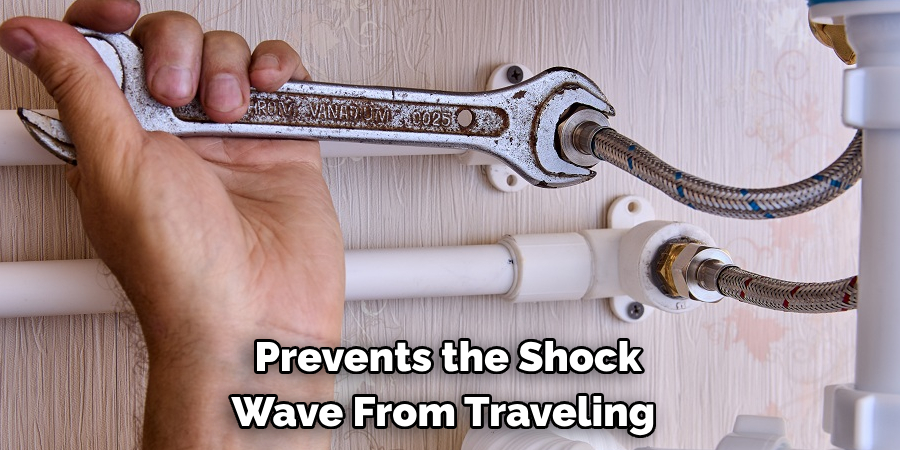
Frequently Asked Questions
What is a Water Hammer in Plumbing?
A water hammer occurs when the flow of water through a pipe or valve suddenly stops, causing a loud banging or knocking sound. The sudden change in pressure within the plumbing system causes this. This phenomenon is also known as hydraulic shock.
What Causes Water Hammer in Toilets?
A water hammer usually occurs when a valve closes suddenly, and the water flow is abruptly stopped. In toilets, this can happen when the fill valve shuts off after refilling the tank. The sudden stoppage of water creates a shock wave that travels through the pipes and causes vibrations, resulting in a banging noise.
How Does Water Hammer Affect Toilet Fill Valves?
Water hammers can cause damage to toilet fill valves over time. Repeated shock waves and vibrations can loosen or damage the internal components of the fill valve, leading to malfunctions or leaks. This not only affects the performance of the toilet but also increases water usage and utility bills.
Conclusion
Now you know how to stop water hammer when toilet fill valve closes. By following these simple steps, you can prevent damage to your plumbing system and ensure a quiet and efficient toilet. Remember to regularly check and maintain your fill valve to avoid any potential issues that may arise in the future. Additionally, it is always recommended to consult a professional if you are unsure about any plumbing repairs or have persistent water hammer issues even after trying these solutions. Keep your plumbing system in good condition and enjoy a peaceful bathroom experience. Keep learning and stay informed about proper plumbing maintenance to avoid any future problems. Happy flushing!

